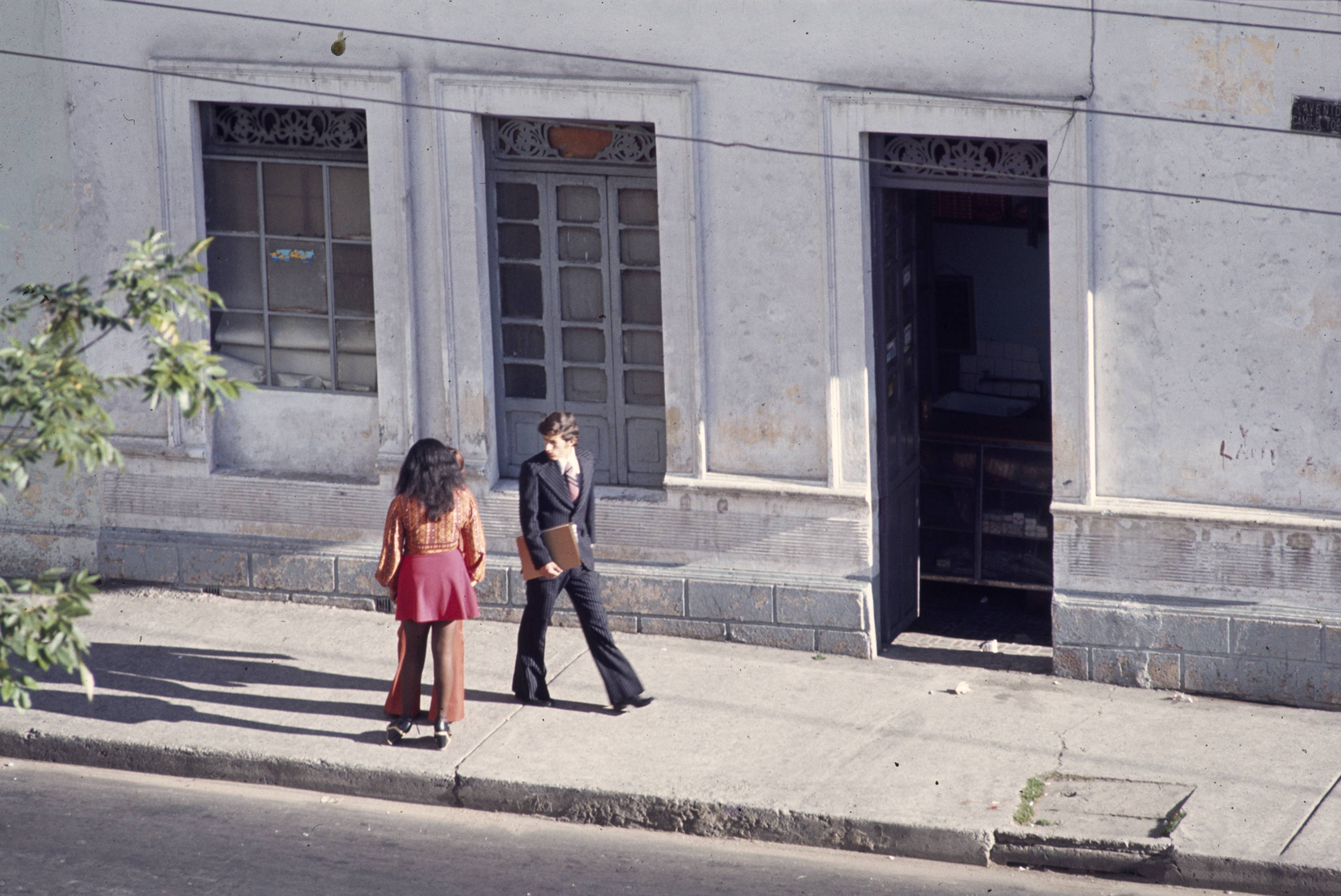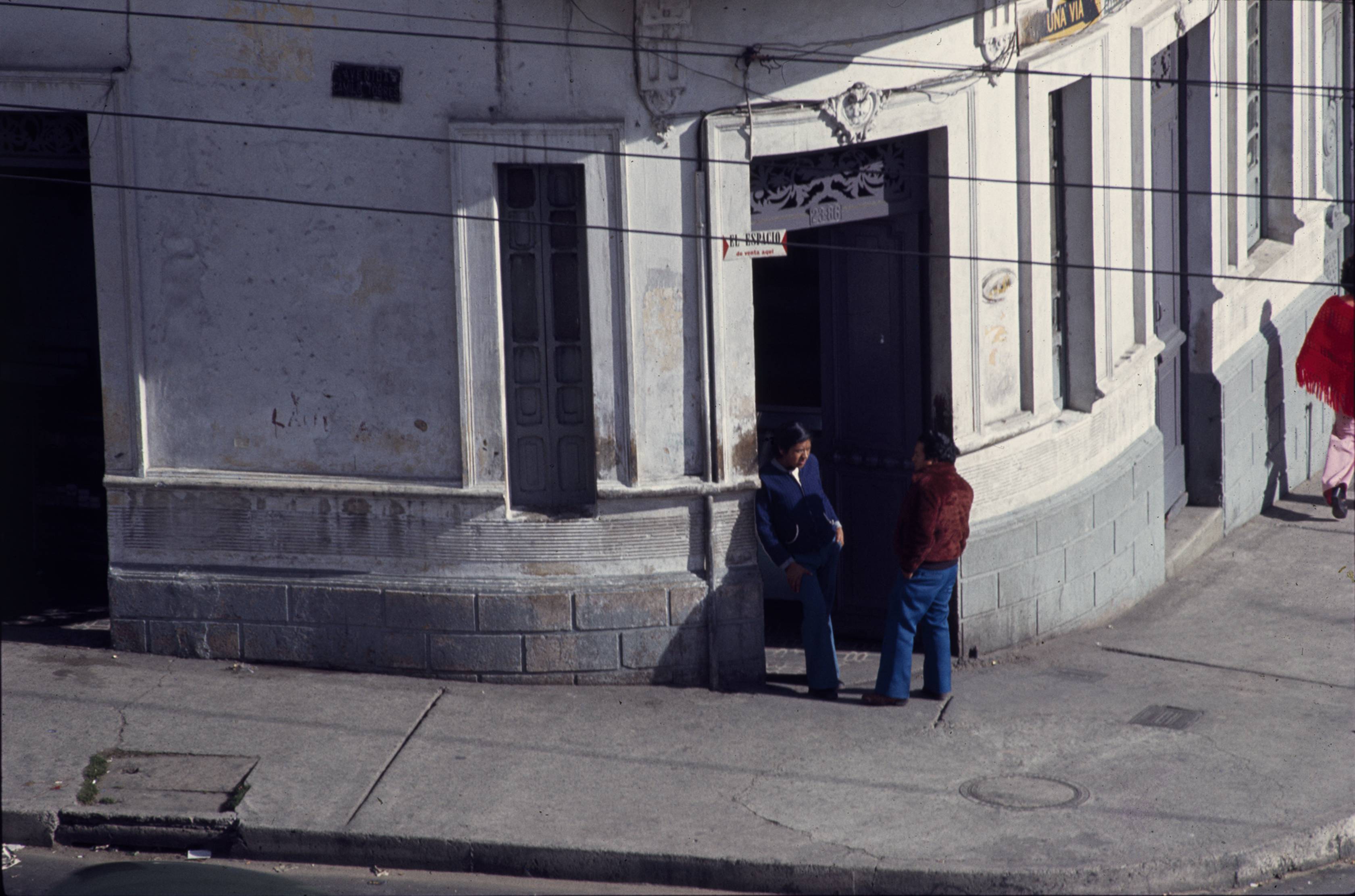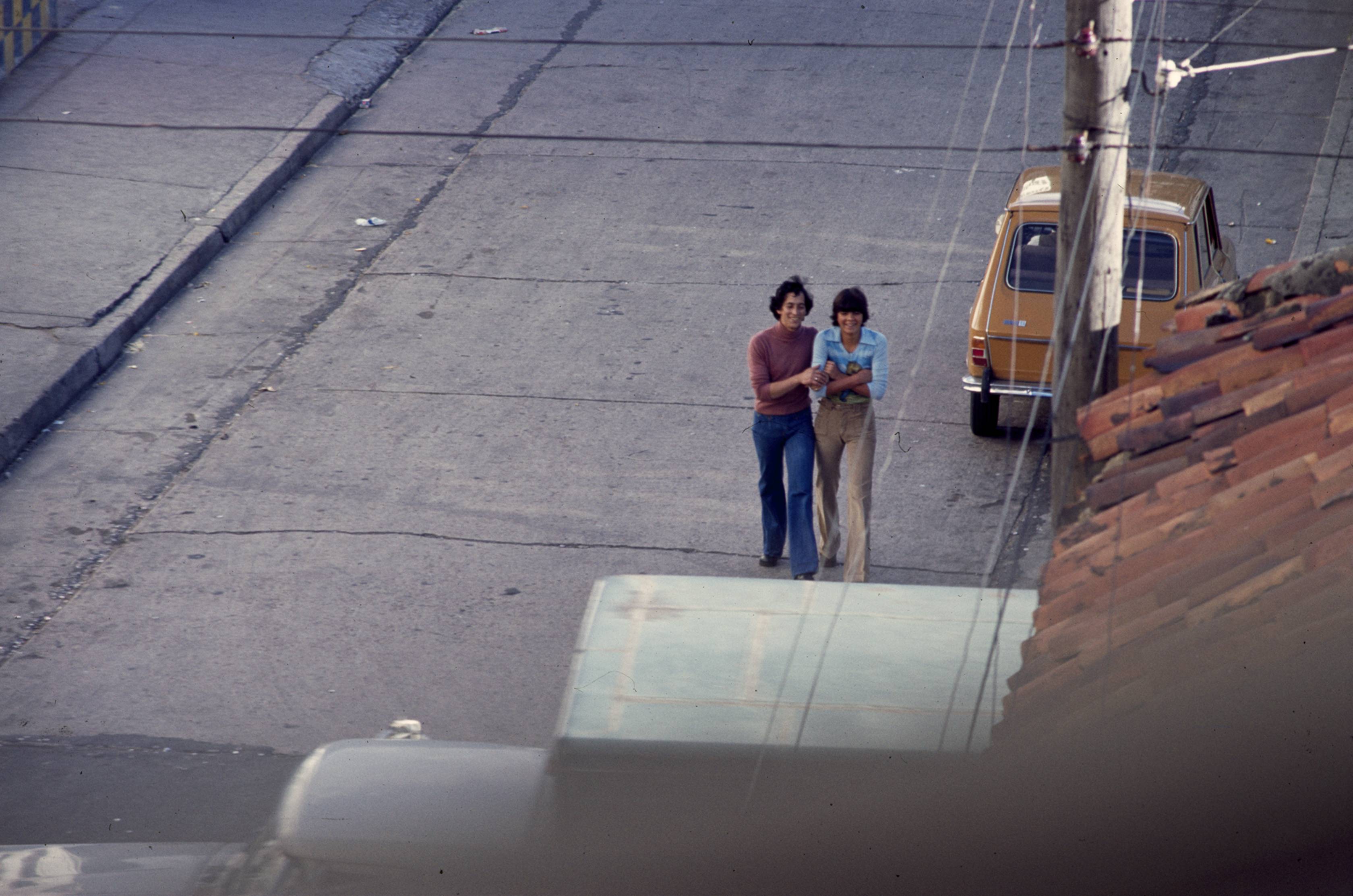Originales película KODAK Chrome
Impresiones en papel de algodón.12 módulos de 40 x 60 cm c/u
Paralelamente a las fotos del Faenza, en los años setenta, y con el mismo sentido voyerista de aquellas hice varias tomas desde la ventana de mi taller en la calle 24 en el centro de Bogotá, a una esquina en la que antaño señorial, una casa republicana, maltrecha por el tiempo y el nomadismo de los habitantes de la ciudad era por aquellos días, dividida y subdividida, un inquilinato habitado por trabajadores del sexo, sede de un prostíbulo y tienda de barrio en su primera planta.
La Esquina Rosa es un rescate de aquellos registros tomados en varias fechas, siempre en la baja tarde. Estas historias incluyen relaciones entre el campo y la ciudad, historias que revelan una marcada diferencia de clases sociales, exhibicionismo de minorías sexuales, costumbres extrañas de seres noctámbulos, además de los ya mencionados cambios que el tiempo trae a la arquitectura de la ciudad y a la apariencia de sus habitantes.
Esta esquina era implícitamente un lugar erótico y en algunas fotos se evidencia a través de las miradas el mercado del sexo.
Bajo la apariencia normal de la cotidianidad diurna emergían episodios violentos en las noches, de esta violencia solo quedan algunos recuerdos como la persecución de la policía a los travestis. Particularmente recuerdo los gritos masculinos de una travesti que se cortaba los brazos con una cuchilla para impedir ser llevada por la policía en una patrulla.
De esta serie también pueden extraerse algunas historias como la extraña presencia de algunas jóvenes en camisola tomando el sol a las cinco de la tarde, de lo que se colige que para ellas era el inicio de su jornada. Era seguramente la hora posterior a su desayuno y un pequeño recreo antes de sus labores nocturnas. Allí también queda registrado el cortejo exhibicionista entre un bello joven, que en la noche se travestía y su amante. Dos obreros con cerveza en mano seguramente atraídos por las prostitutas del lugar, quienes en un momento miran con odio a un ejecutivo blanco que cruza la calle. Así mismo, la presencia de dos niños indígenas urbanos reconocibles en su etnia por el color de sus ropas, relacionados directamente con la tienda que a su vez era un vinculo con el campo. Lo cotidiano es como una gran película y cada foto se revela como un fragmento de ella.
Miguel Ángel Rojas Ortiz.
The Pink Corner
Originals on Kodachrome film
Printed on cotton rag paper
12 panels, 15 3/4 x 23 1/2 inches each
Images of a street corner in downtown Bogotá, of a mansion that housed a brothel, among other businesses
In conjunction with the photos of the Faenza Theater from the 1970s, and with the same voyeuristic intention, I took a number of shots from the window of my studio on 24th Street in downtown Bogotá. They were of a street corner where in times past, a Republican-style house—ill-treated by time and by the nomadism of the city’s inhabitants—had been divided and subdivided to create a tenement house for sex workers, a brothel, and a neighborhood store on the ground floor.
The Pink Corner is a collection of those photographs taken on different days, always in the late afternoon. These stories examine relationships between city and country, and reveal a sharp contrast between social classes, the exhibitionism of sexual minorities, the odd habits of nocturnal beings, as well as the changes that time wrought on the city’s architecture and the appearance of its residents.
This corner was implicitly an erotic place, and the gazes seen in some of the photos reveal the presence of the sex trade.
From the apparent normalcy of daytime there emerged violent nocturnal episodes, and only a few memories remain of that violence, such as police harassment of transvestites. In particular, I remember the masculine screams of a transvestite cutting her arms with a knife to avoid being taken away in a police car.
Other stories that can be extracted from this series include the strange presence of young women dressed in camisoles basking in the sunlight at five in the afternoon, from which we can infer that it was the beginning of their day, probably a short time of relaxation after breakfast, before commencing the night’s work. There is also a record of the exhibitionist courtship between a beautiful young man, who was a transvestite by night, and his lover. Two construction workers holding beers were certainly drawn to that corner by the local prostitutes, who at one point cast a baleful glance at a white businessman crossing the street. Two urban indigenous children whose ethnicity is identifiable by the color of their clothes are directly connected to the store, which in turn was a link to the countryside. Everyday life is like a massive movie and every photo is revealed to be one fragment of it.
Miguel Ángel Rojas
Translated by Michelle Suderman.












